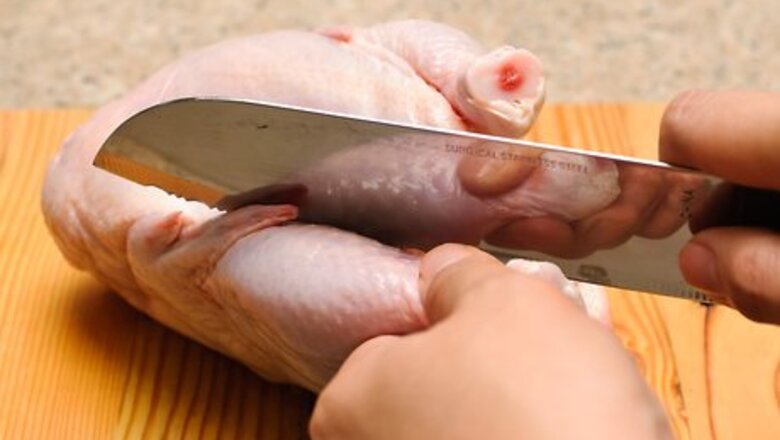
views
Part One: Prepare the Ingredients
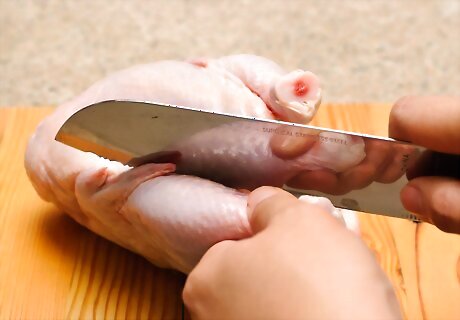
Know the proper proportions. You can create a chicken casserole without a recipe by following a standard formula. To make a casserole that serves approximately four people, you'll need 1 cup (250 ml) cooked chicken, 1 cup (250 ml) of vegetables, 1 to 2 cup (250 to 500 ml) of starch, and 1-1/2 cups (375 ml) of a binder. If you wish to use a topping, prepare roughly 1 cup (250 ml). Double the above proportions to make a casserole that can serve up to eight people. You'll also need to use the right baking dish. Use an 8-inch (20-cm) square baking dish or 2-qt (2-L) baking dish when preparing chicken casseroles that serve four people. For larger casseroles, opt for a 9-by-13-inch (23-by-33-cm) baking dish.

Choose the ingredients. The chicken is the star of your casserole, but you'll also need to decide on vegetables, starches, binders, and toppings. The best vegetables will depend on the flavor profile you wish to meet, but popular choices include carrots, corn, peas, mushrooms, celery, broccoli, onion, green beans, and peppers. Frozen mixed vegetables can also be used. The common casserole starches include pasta, potatoes, and rice. For chicken casseroles, prepared stuffing can be used, as well. The binder typically consists of a white sauce made from a blend of ingredients. "Cream of" condensed soups are common bases, with Cream of Chicken and Cream of Mushroom soups being among the most popular choices. Thin the soup out with a little water or milk if the it doesn't spread well on its own. Toppings are only optional, but popular choices include breadcrumbs, crushed cereal flakes, cheese, and crushed crackers.

Use dried herbs. Dried herbs can maintain their flavor more effectively than fresh herbs when exposed to intense or prolonged heat. Since casseroles can take 30 minutes or longer to cook through, dried herbs are usually the better option. To enjoy the flavor of fresh herbs with your chicken casserole, consider sprinkling chopped fresh herbs over the top of the casserole during the last 5 to 10 minutes of cooking time. The shortened time will allow the fresh herbs to maintain their flavor in spite of the heat.
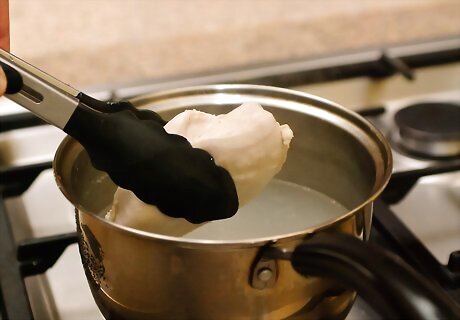
Cook the chicken. The chicken should be completely cooked before you add it to the casserole. Let it cool slightly after you finish cooking it, then cut it into bite-sized pieces. You can boil, bake, saute, or grill the chicken. Either cook it plain or add seasonings that will complement the flavor palate of the finished casserole. To save time, you can use packaged, pre-cooked chicken or cut up the meat of a whole rotisserie chicken. Note that 1-1/4 lb (565 g) of chicken breast will usually produce roughly 3 cups (750 ml) of cooked chicken. You can also get the same amount of meat from a whole 3 lb (1350 g) chicken.
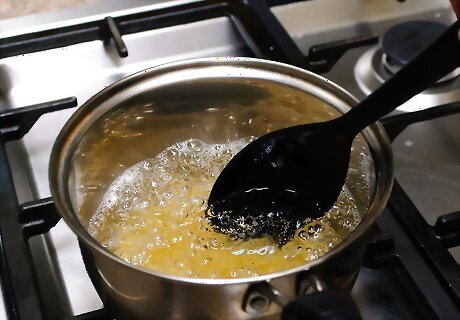
Partially cook hearty ingredients. Most notably, you'll need to partially cook the starch ingredient and any root vegetables you plan to include. Since these foods take a longer time to cook than many other ingredients, partially cooking them before you toss them into the casserole can ensure that everything finishes at the same time. Follow the package instructions when cooking pasta or rice, but stop cooking them 2 to 4 minutes before the suggested cooking time so that they don't get overdone. Cook root vegetables, like carrots and onions, by steaming, boiling, or roasting them. If you plan to use potatoes or yams as your starch, you can cook them using any method, as well. Remember to only cook the vegetables about halfway to three-quarters doneness, however.
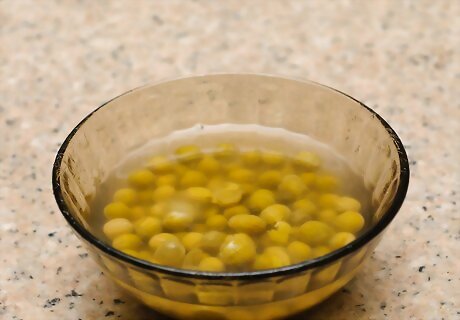
Thaw any uncooked ingredients. Any ingredients that don't need to be cooked before you add them to the casserole should still be brought to room temperature before you assemble the dish. This includes frozen vegetables and frozen pre-cooked chicken. Using frozen ingredients will increase the overall cooking time. For some small ingredients, like frozen peas or frozen corn kernels, this may not be too detrimental to the overall casserole, but it becomes a bigger problem when you use larger chunks of frozen food. While the frozen food is brought up to temperature, the warm ingredients in the casserole can overcook. The overcooked ingredients can dry out or create hazardous hot spots in the dish.
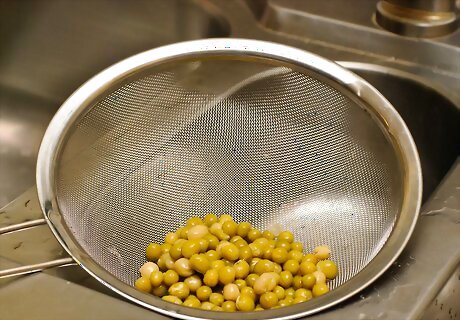
Remove excess moisture. Some vegetables can retain excess moisture, which may cause the casserole to become runny and unappetizing. Drain as much liquid from the vegetables you plan to use before assembling the dish. Thoroughly drain any cooked vegetables, especially if you cooked the vegetables in water. Allow them to sit in a colander for several minutes to remove as much water as possible. Pour frozen vegetables into a colander. As they defrost, the excess water should drip away from them. Use your hands to squeeze any excess moisture from thawed frozen greens like spinach. If you plan to use fresh or canned mushrooms, cook them beforehand. Most mushrooms have a high water content, and the only way to remove that excess water is with heat.
Part Two: Assemble the Casserole

Preheat the oven to 375 degrees Fahrenheit (190 degrees Celsius). Prepare the appropriately sized baking dish by greasing it with nonstick cooking spray. You can also line the baking dish with nonstick aluminum foil for an even easier cleanup. Doing so is especially ideal when you plan to freeze and reheat the finished casserole later.

Mix the prepared ingredients. Combine the cooked chicken, vegetables, starch, and binder in a large bowl, stirring until evenly mixed. Pour the contents of the bowl into the greased baking dish. If you plan to use dried herbs or other seasonings, mix them into the binder separately. Similarly, if the binder consists of multiple elements (e.g. two soups and a little milk), combine all of the binder ingredients before adding the solid ingredients. After the binder and seasonings have been mixed together, you can combine the binder mixture with the chicken, vegetables, and starch.
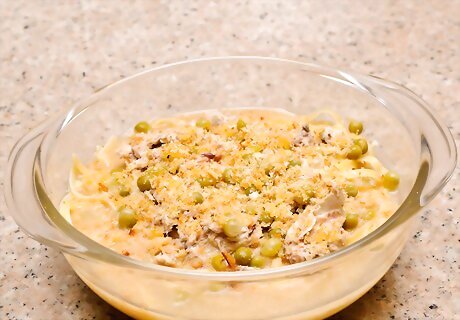
Add a topping, if desired. Toppings aren't strictly necessary, but adding a topping can give the casserole a final hint of flavor and greater visual appeal. Evenly sprinkle your topping of choice over the top of the chicken casserole. Resist the urge to cover the entire top in a thick layer of cheese or other toppings since doing so could make it difficult for the heat to penetrate the surface and reach the inner ingredients.
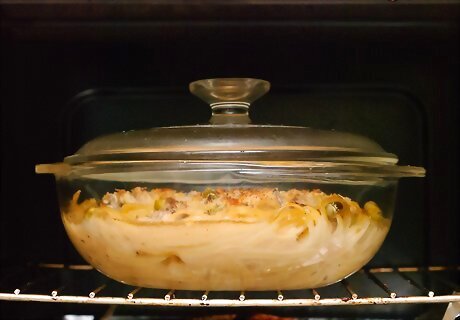
Bake until heated through. For casseroles prepared in an 8-inch (20-cm) square baking dish, you'll usually need to cook them for approximately 30 minutes. Casseroles prepared in a 9-by-13-inch (23-by-33-cm) baking dish may require 5 to 10 additional minutes. You'll need to adjust this cooking time based on the size of the pan. For deeper pans, increase the cooking time by 25 percent. Likewise, for shallower pans, decrease the cooking time by 25 percent. If you added a topping, keep the casserole covered for the majority of the baking time. Remove the foil during the last 5 to 10 minutes so that the topping can brown. If you did not add any topping, you can leave the casserole uncovered for the entire cooking time. Doing so will help create a crispier top. Test for doneness by inserting a wooden skewer or knife into the center. Feel the utensil immediately after removing it. If the casserole is adequately hot throughout, the utensil should also feel hot to the touch.

Let it rest before serving. Once the casserole is ready, remove it from the oven and allow it to sit for at least 5 minutes before you cut and serve it. During that resting time, the various flavors of the casserole can meld together more thoroughly. When the resting period has ended, simple cut the casserole into slices and transfer each slice to an individual serving dish. Enjoy!
Part Three: Freeze the Casserole (Optional)
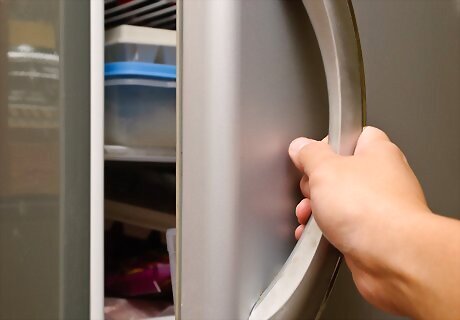
Freeze the casserole in stages. Assemble the casserole in a foil-lined baking dish, leaving enough foil hanging over the edge to cover and seal the dish. Place the entire dish in the freezer and allow the entire casserole to freeze into a solid block. Once the casserole has frozen, wrap the foil over and around the casserole, then lift the frozen mass out of the baking dish. Clean and reuse the baking dish as desired. Place the foil-wrapped casserole into a large freezer-safe plastic bag or container. Store it in your freezer for up to three or four months.
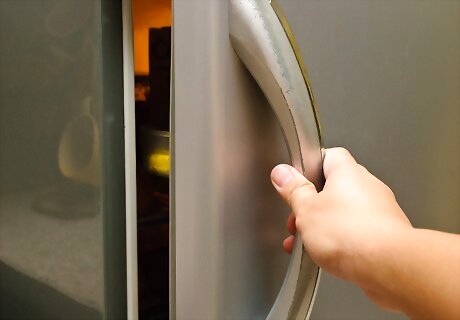
Thaw completely. Allow the casserole to completely thaw in your refrigerator for 24 to 48 hours. Roughly 30 to 60 minutes before you plan to cook it, remove it from the refrigerator and let it drop down to room temperature. Increasing the cooking time to cook a partially frozen casserole can have bad consequences. Some of the ingredients can overcook while others remain frozen, and the outer edges may burn while the center remains cool.
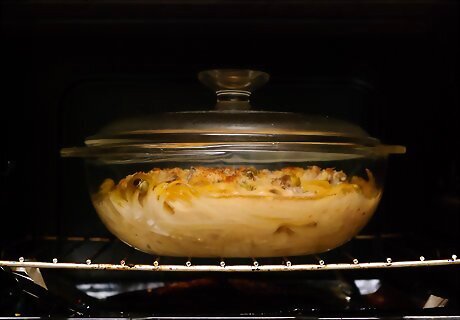
Bake as usual. After thawing the chicken casserole, bake it in an oven preheated to 375 degrees Fahrenheit (190 degrees Celsius) for 30 to 40 minutes, or until the casserole is heated through. Let the chicken casserole rest for 5 minutes before servings.
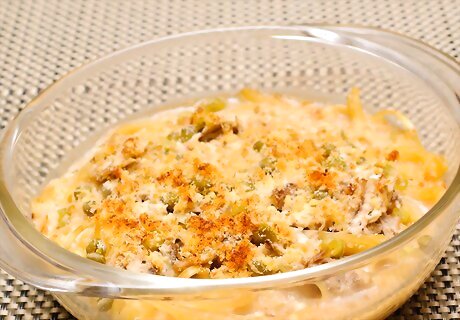
Finished.



















Comments
0 comment